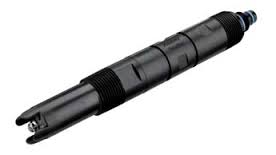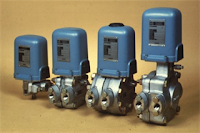 |
| pH and ORP Sensor (courtesy of Foxboro) |
The sensors are available with a choice of temperature compensation and cable termination. They are available with an internal pre-amplifer for use up to 150 m (500 ft) and with a Smart sensor for use up to 100 m (328 ft) from the analyzer or transmitter. The sensors can be mounted to the process in a number of ways. They have a 3/4-inch external NPT connection on both the electrode and cable end. The sensors can be inserted directly into the process line or tank or mounted through a variety of accessories including bushings, tees, flow chambers, and ball valves/insertion assemblies.The sensors are available in both analog and Smart versions.
These industry-leading sensors are already proven in countless installations including chemicals, pulp & paper, all kinds of industry and municipal water/wastewater treatment, metals/mining, and food and dairy applications worldwide.
The Foxboro® brand Model 876PH is a 2-wire loop powered intelligent transmitter that, when used with appropriate electrochemical sensors, provides measurement, local display, and transmission of pH, ORP (Oxidation-Reduction Potential), or ISE (Ion Selective Electrode) concentration. The transmitter outputs a HART digital signal and a 4 to 20 mA analog output. Versions are available for use with both analog and Smart (digital) sensors.
This video demonstrates how to correctly configure a Foxboro® PH10 sensor using the Foxboro® 876PH Transmitter.
Form ore information, contact:
Mead O'Brien
www.meadobrien.com
(800) 892-2769



